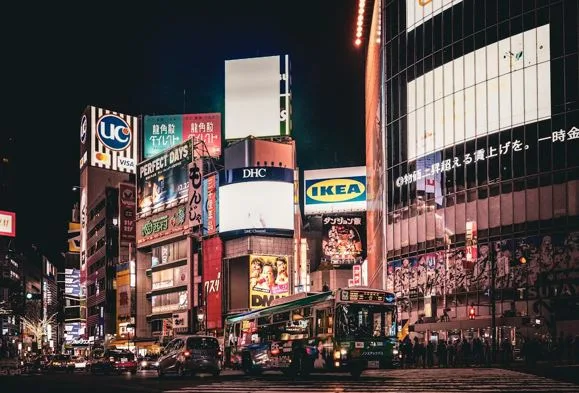How Global Brands Successfully Enter the Japanese Market
Japan is the third-largest economy in the world, known for its technological innovation, rich culture, and consumer sophistication. For global brands, entering the Japanese market presents both immense opportunity and considerable challenge. While Japan offers access to a mature, high-spending consumer base, it also comes with unique cultural norms, language barriers, and local expectations that often trip up even the most seasoned companies.
Many international brands have launched in Japan only to struggle or retreat due to a lack of local understanding. Others have flourished by taking the time to understand and adapt to the country’s distinct business environment.
This article explores how successful global brands have approached Japan, what lessons can be learned, and how partnering with the right local experts can make all the difference.
Understanding the Japanese Market Landscape
Japan is not a one-size-fits-all destination. It’s a consumer-driven economy where product quality, attention to detail, and customer service expectations are extraordinarily high. Local consumers are discerning and loyal but cautious with new entrants.
Several factors make Japan a unique market:
- A language and writing system that differs entirely from English and other Western languages
- Deep-rooted traditions and etiquette that influence consumer behavior
- High standards for branding, packaging, and presentation
- A preference for subtlety and humility in advertising
- Long decision-making processes in B2B contexts
While Japan is globally connected, local culture still holds strong influence. What works in other parts of Asia or Western markets may not translate directly to Japan.
Why Many Brands Fail on Their First Attempt
Even globally recognized brands have faced setbacks in Japan. Companies often assume that brand recognition or success in nearby Asian markets will carry over. Unfortunately, that’s rarely the case.
Common reasons brands struggle in Japan:
- Underestimating the importance of localization
- Using direct translations instead of culturally adapted messaging
- Failing to build relationships with local distributors or media
- Misreading consumer preferences or market demand
- Launching without a long-term commitment
Japan values consistency, trust, and reputation. A rushed launch or culturally tone-deaf campaign can do long-term damage to a brand’s perception.
Lessons from Brands That Got It Right
Despite the challenges, many global companies have cracked the code by adapting to the Japanese market with respect and strategy.
Starbucks
Starbucks took time to understand the Japanese culture before expanding rapidly. Instead of replicating their U.S. model, they tailored their store design, product offerings, and customer experience to reflect Japanese preferences. Seasonal flavors, exclusive merchandise, and beautifully designed stores helped the brand become a local favorite.
Apple
Apple’s success in Japan is tied to its sleek, minimalist branding and high-quality products, which align well with Japanese consumer values. But it also worked with local telecom providers and invested in flagship stores that blend with the cityscape, showing cultural awareness.
IKEA
IKEA initially struggled in Japan because their large furniture items didn’t suit the small living spaces common in Japanese homes. After reevaluating, they adjusted their product sizing, added assembly services, and opened stores in more convenient urban locations. The shift paid off.
The Importance of Localization
True localization goes beyond translation. It means understanding the nuances of local communication, behavior, and culture.
Key aspects of localization in Japan include:
- Adapting visuals and color schemes to align with Japanese tastes
- Ensuring packaging design is clean, elegant, and functional
- Using polite, indirect language in advertising
- Considering seasonal and regional product variations
- Aligning with local holidays and gift-giving customs
Your brand message must be culturally resonant. What might be seen as bold and edgy in the U.S. may come across as aggressive or inappropriate in Japan.
Digital Marketing in Japan: A Different Landscape
Japan’s digital ecosystem differs significantly from other markets. While platforms like Instagram and YouTube are widely used, there are important regional nuances.
For example:
- X is more popular in Japan than in most other countries and is often used for brand engagement
- LINE, a messaging app, dominates communication and offers branded channels, stickers, and promotions
- Influencer marketing is powerful but requires careful selection of local personalities who reflect the brand’s values
We asked Nathan Hoernig of Humble Bunny, a performance marketing agency in Japan, how digital is different here and here’s what he had to say: “Digital in Japan is well-adopted in Japan like other markets, however, analog, offline, and brick and mortar initiatives all have a supplemental and supportive role here. Combining them is ideal though you CAN successfully launch here with just a digital strategy.”
Building Local Partnerships
In Japan, relationships matter. Whether you’re launching a consumer product or entering the B2B space, having local partners can make or break your success.
Distributors, retail partners, and media contacts need to trust that your brand is in it for the long haul. This means:
- Consistent communication in Japanese
- Showing respect for hierarchy and business etiquette
- Participating in face-to-face meetings when possible
- Hiring bilingual staff or a local liaison
Many successful brands have built joint ventures or established partnerships with established Japanese companies to ease market entry and establish credibility.
Regulatory Considerations
Japan has strict regulations around product safety, labeling, and advertising. Depending on your industry, you may need to navigate:
- Import procedures and tariffs
- Food or drug safety approvals
- Consumer protection laws
- Employment and labor compliance
Understanding and following these regulations is critical. Failure to comply can lead to costly delays or even legal consequences.
Tailoring Customer Experience
The Japanese customer experience is rooted in omotenashi, the philosophy of hospitality that emphasizes care and attention to detail. Brands that prioritize customer satisfaction and go above and beyond to serve their clients often find loyal followings in Japan.
This includes:
- Fast, reliable customer service in Japanese
- Easy return and exchange policies
- High-quality packaging and presentation
- In-store staff who are knowledgeable and respectful
The smallest mistake can impact a customer’s perception, while small acts of excellence can create lifelong fans.
Thinking Long-Term
Japan is a market that rewards patience. Quick wins are rare. It takes time to earn trust, refine your approach, and grow your reputation.
Successful brands view their Japan strategy as a long-term investment. This means:
- Allocating adequate marketing budgets
- Hiring local talent
- Building brand equity slowly and steadily
- Adjusting to feedback and evolving market trends
The companies that have succeeded here didn’t just enter the market. They committed to it.
We again asked Nate about his experience with the “slowness” of Japan.
“Japanese consumers are intelligent and are less emotionally swayed towards buying things. However, as Geert Hofstede discovered, they are also heavily motivated to enrich and improve their lives. This is why we coach customers to focus on their content and media diversity around 8 specific “Lenses” (that we call LocaRISE®). We all laugh at the super long landing pages of Japan, right? This is the secret recipe behind convincing a tough market.
Japan doesn’t need to be “slow”, but brands need to employ the right approaches to conveying their product, and most likely they’ve not hit those angles with their global content strategies.”
Final Thoughts
Breaking into the Japanese market isn’t easy, but it is possible. Global brands that succeed understand the culture, adapt their strategies, and show genuine respect for local consumers. They invest in localization, build relationships, and approach the market with patience and precision.
Rather than going it alone, many brands find success faster by working with local partners who know the landscape inside and out. Agencies like Humble Bunny offer the cultural insight, marketing expertise, and strategic support that international companies need to thrive in Japan.
If you’re serious about Japan, approach it with humility, adaptability, and a deep desire to understand. The payoff is not just market share but long-term brand loyalty in one of the world’s most respected consumer markets.






